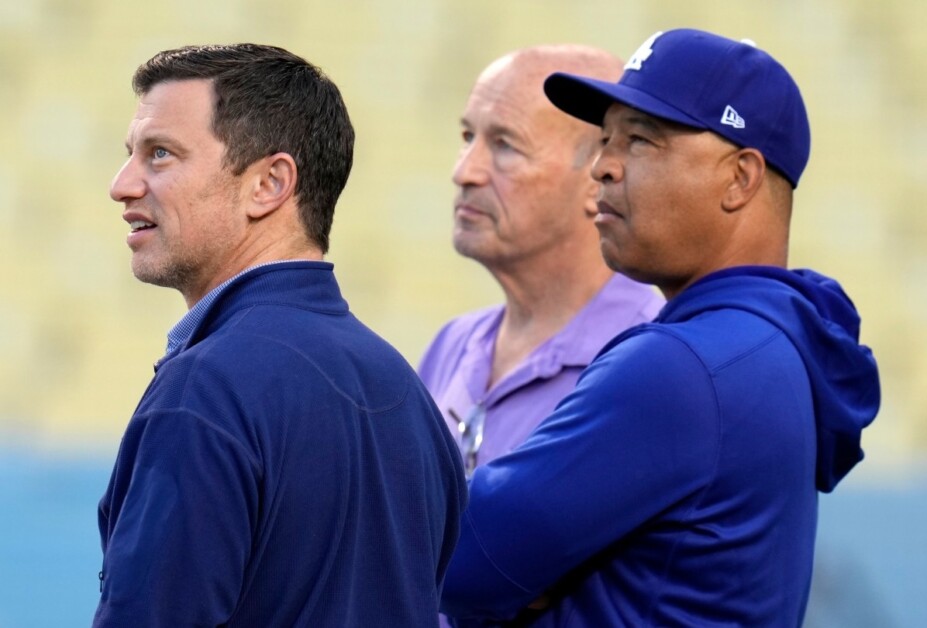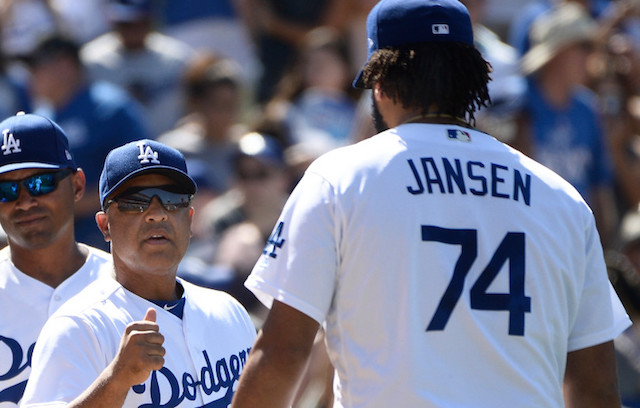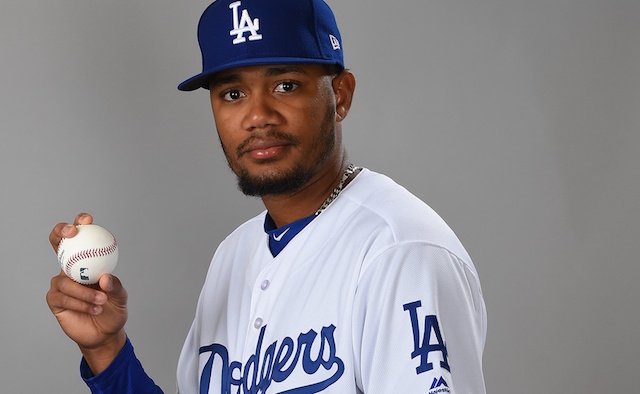The Los Angeles Dodgers have had a quiet offseason so far despite losing multiple key players to new organizations.
They have already seen Trea Turner, Cody Bellinger, Tyler Anderson, Andrew Heaney, Tommy Kahnle, Chris Martin and Joey Gallo sign with other teams, while Justin Turner remains a free agent. In terms of free agency, so far the Dodgers have only re-signed Clayton Kershaw, and added Shelby Miller, Jason Heyward and Noah Syndergaard.
Among the free agents the Dodgers were said to be pursuing, they missed out on their reported top starting pitcher target with Justin Verlander heading to the New York Mets and top center field target with Kevin Kiermaier signing with the Toronto Blue Jays.
There is still a lot of offseason left, but the list of noteworthy options to improve seemingly is down to Dansby Swanson. While Swanson is reportedly a possibility, he still has a robust market and figures to be priced outside the Dodgers’ comfort zone.
As it currently stands, the Dodgers have a projected payroll of about $190 million, giving them roughly $43 million to spend before hitting the luxury tax threshold for the 2023 season of $233 million. Although it’s a significant amount of space, they still have needs at shortstop and center field, and arguably in the rotation and bullpen as well.
It’s likely the Dodgers would need to go over the luxury tax to address all those needs, but are they willing to do so? Dodgers president of baseball operations Andrew Friedman is adamant there is no mandate to stay under the tax threshold from ownership, but also noted, “there are benefits to doing it.”
The Dodgers went over the luxury threshold in both 2021 and 2022, meaning if they go over again they would be charged as third-time offenders. The penalties for going over three straight years or longer would be a 50% tax on every dollar spent over the $233 million threshold.
In addition, there’s also a surcharge threshold for clubs that exceed the base threshold by $20 million or more, ranging from a 12% surcharge up to 60%, depending on how far over the club is. Teams that are $40 million or more above the threshold also have their highest selection in the next MLB Draft moved back 10 places unless the pick falls in the top six, in which case they’ll have its second-highest selection moved back 10 places.
However, if the Dodgers drop below the tax threshold for one season, penalties are reset back to the first-time offender marks, which would be a 20% tax on all overages and 30% in a consecutive season.
The last time the Dodgers were under the threshold was when they had a luxury tax number of $178 million during the 2020 season. The tax threshold that year was set at $208 million. They also dipped under it in 2018 after paying a record penalty in 2017 and going over the threshold every season for five years since 2013.
“We’ve talked about this over the years, we never view payroll in one-year increments,” Friedman said after the Dodgers were eliminated from the 2022 postseason.
“We always view it over a rolling time period, and there are times where our payrolls are higher. There’s times where it’s not as high, and a lot of that times with our farm system and when young players are coming up.
“Because the No. 1 thing for Mark Walter and our ownership group is to do everything we can to go out and win a World Series. Sometimes as part of the transition that happens on rosters over a three-, five-year period, young players get integrated onto the roster, by definition payrolls come down some when that happens, depending on how many.
“We have a number of really talented Minor League players right now at the upper levels, and part of our focus this offseason will be how many to look to integrate early in the year, and how many of them will kind of serve as depth throughout the year, get experience and then be part of the core going forward.”
As Friedman highlighted, prospects in the Dodgers system will be relied upon next season, including Miguel Vargas, Michael Busch, James Outman, Bobby Miller, Ryan Pepiot and Gavin Stone. It’s a risky strategy to rely on so many young players when trying to win a division title, and even more so with how talented the San Diego Padres are now, but on the surface, it appears that is the Dodgers’ plan this year.
However, all they need to do is get into the playoffs and anything can happen. Spending on big-name players doesn’t guarantee anything as we have seen so often, and the Houston Astros just won the World Series by elevating many of their young players into important roles.
The Dodgers may still make a significant move if the right one presents itself, but they aren’t going to pass the luxury tax threshold just for anyone. The deeper into the offseason it gets, the odds increase that they will stay below the threshold.
But with more than three months before 2023 Opening Day, they will continue to add players, just don’t expect those acquisitions to be high-level talent.
They may pull off a move for Swanson still if his price drops to a point they’re comfortable with, or maybe they’ll make a trade to bring in an impact-type player, but regardless, it’s likely they stay below the $233 million cap this season.
Does Trevor Bauer affect the current Dodgers luxury tax number?
The Dodgers’ projected $190 million payroll figure does not include the salary of Trevor Bauer, who was suspended two seasons by MLB for alleged sexual assault.
However, Bauer is appealing his suspension and the decision is expected to come by January. If the suspension is reversed or reduced by an arbitrator, the Dodgers would be on the hook for his salary from this past season and/or pay for this upcoming season with an average annual value of $34 million.
If Bauer’s suspension is overturned, the Dodgers would add $34 million onto their 2022 payroll, which would mean additional penalties. If it is just reduced to one season, the Dodgers would be liable to pay him for the 2023 season, which would leave them with roughly $9 million to spend before hitting the luxury tax number.
The arbitrator could also uphold the suspension, in which case the Dodgers would not have to pay any of Bauer’s salary, and the right-hander would become a free agent after the season. Still, the threat of having to pay, and possibly back pay his salary, seems to be enough to make the Dodgers hesitant to spend this offseason.
Make sure to follow Dodger Blue on Instagram! It’s the best way to see exclusive coverage from games and events, get your questions answered, and more!








